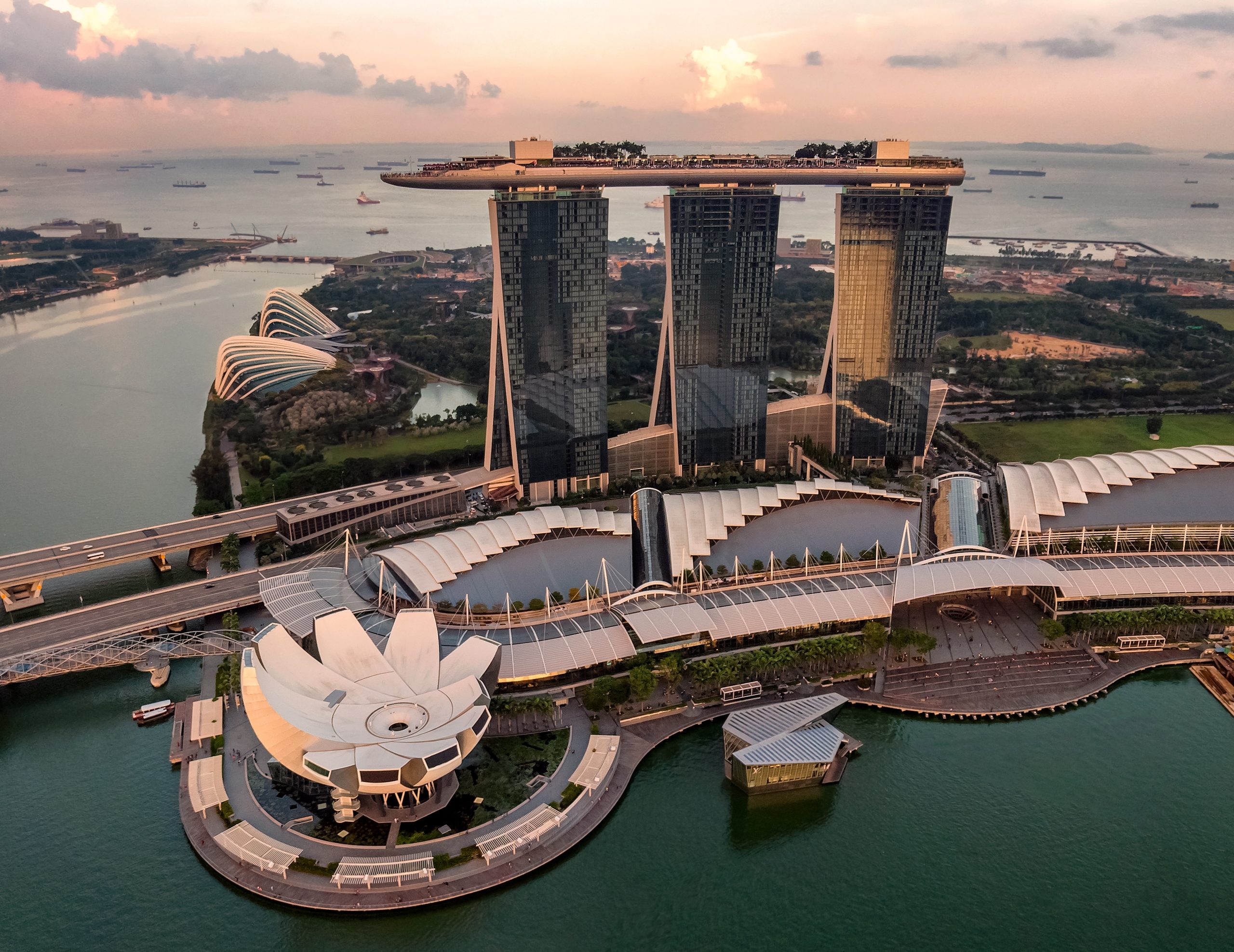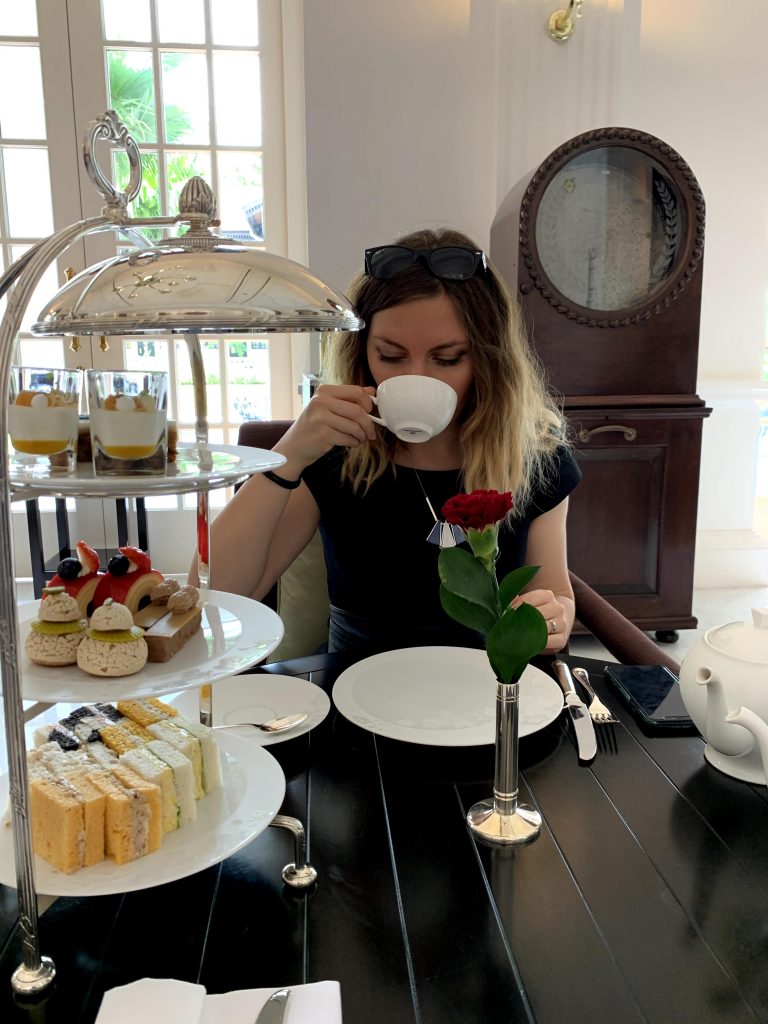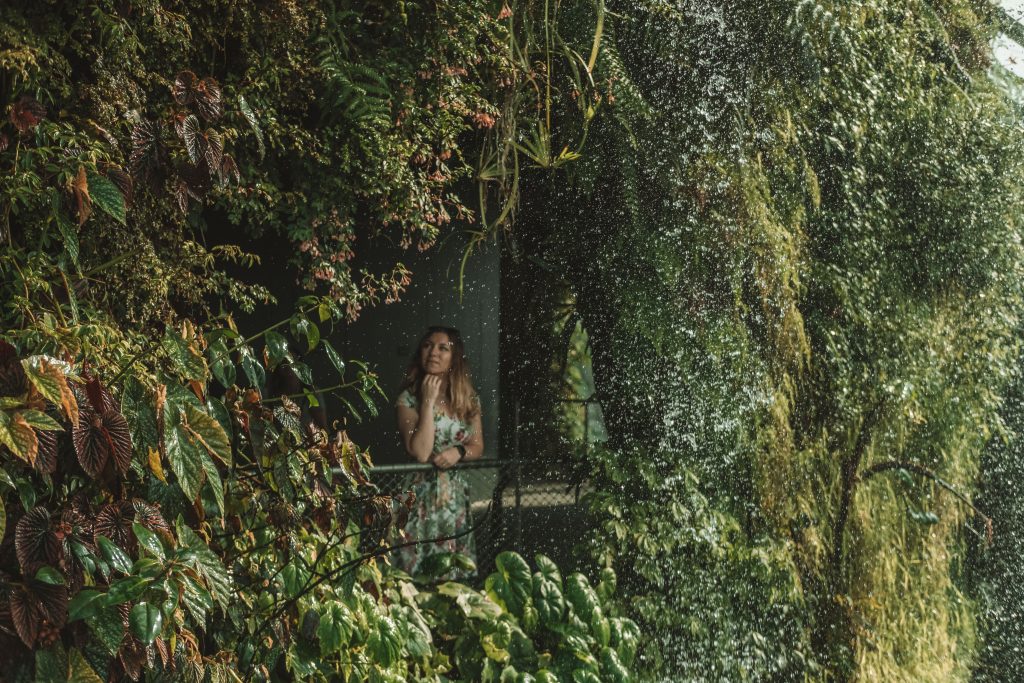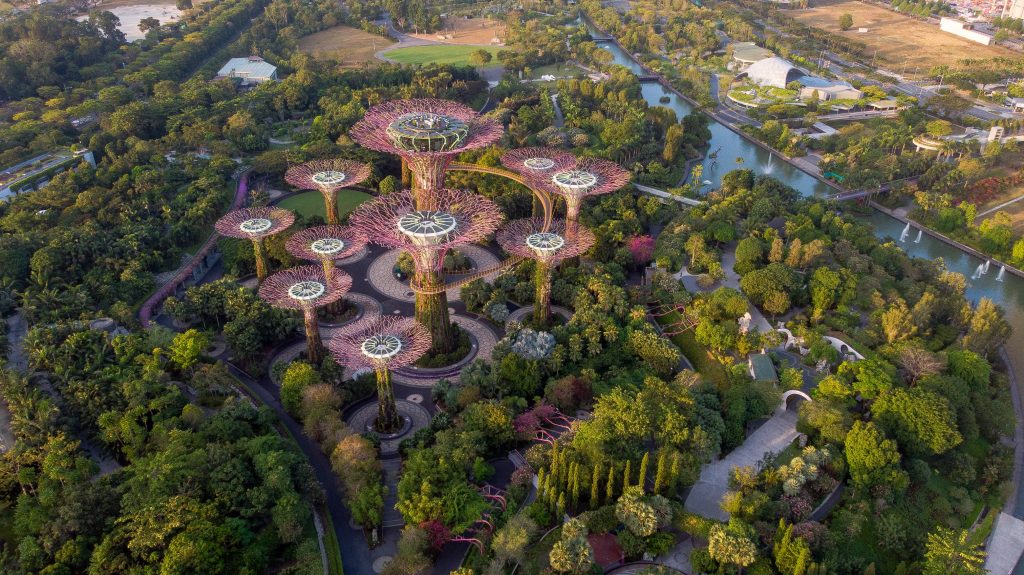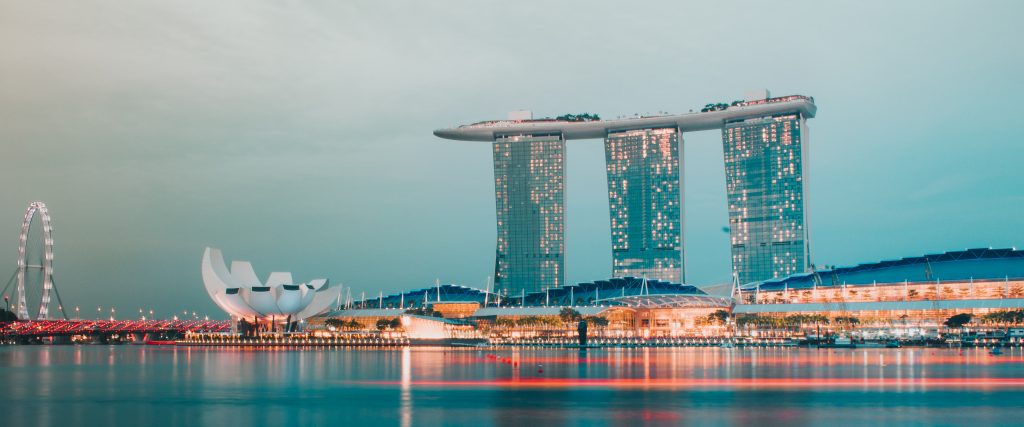Singapore is a sovereign city-state located in Southeast Asia. The world’s only city-island–nation, Singapore is composed of one main island (Singapore island), one outlying islet (Pedra Branca) and 63 smaller satellite islands and islets. It has four official languages, English (lingua franca), Malay, Mandarin and Tamil.
Table of Contents
- Things to know
- Visa
- Safety in Singapore
- Best time to visit
- How to get around
- Things to do
- Marina Bay
- Universal Studios
- Walking trails
- Cooking classes
- Hawker centres
- Shop on Orchard Road
- The Raffles Hotel Afternoon Tea
- Singapore Zoo
- Places to see
- Little India
- Chinatown
- Marina Bay Sands
- Singapore Botanic Gardens
- Sentosa island
- Gardens by the bay
- What to pack
- Where to stay
- Singapore Cuisine
- Shopping and Souvenirs
- Latest Singapore Articles
Modern Singapore was founded as a trading post in Singapore in 1819 by Sir Stamford Raffles which led to its becoming a British colony in 1824. During the Second World War, Singapore was occupied by Japan and returned to the British in 1945. In 1959, Singapore gained self-governance, and later in 1963, became part of the new federation of Malaysia.
In 1965, Singapore ceased to be part of the federation and became an independent country. Singapore has no natural resources, and many assumed Singapore will not resist long without its previous coloniser. So how did Singapore become one of the Four Asian Tigers with the second-highest GDP her capita?
When Lee Kuan Yew took over Singapore, it was one of the most corrupt countries in the world. But instead of allowing Singapore to further succumb to chaos, Lee Kuan Yew encouraged international firms to establish themselves in Singapore. He made strong economic policies and especially encourages the development of the technological sector. Furthermore, Lee Kuan Yew encouraged free trade and in 1971, when America de-linked the dollar from gold, Lee established Singapore as a regional centre for forgiven exchange.
Lee didn’t stop here. He established the Economic Development Board to boost Singapore industrialisation. There were major investments to create skilled workers. There was also the creation of the Housing Development Board which helped its people to move out of small slums into well-planned housing created to upgrade living conditions for its citizens. In 1991, the government also created the Strategic Economic Plan to educate people.
Needless to say, that all of Lee Kuan Yew’s plans were a success. Singapore has transformed into what is now a major financial and shipping hub. Singapore is considered the most expensive place to live in the world and is also identified as a tax haven. Singaporeans enjoy one of the world’s longest life expectancies.
The name Singapore comes from Malay Singapura, and it means “lion city“.
Things to know
Currency – The official currency in Singapore is Singapore Dollar (Symbol: S$ Code: SGD)
Language – There are four official languages in Singapore: English (lingua franca), Malay, Mandarin and Tamil.
ATMs – ATM’s are available in the cities and cards are widely accepted. The withdrawal limit on many ATMs S$2000. it’s a good idea to bring two cards in case of emergency.
Plugs & Sockets – Singapore uses three types of plug: plug types C, G and M. Plug type C is the plug that has two round pins, plug type G has three rectangular pins in a triangular pattern and type M is the plug that has three round pins. Singapore operates on a 230V supply voltage and 50Hz.
Safety – Singapore is one of the safest and cleanest countries in the world. Singapore has a very low crime rate. It’s one of the safest countries for solo and group travellers.
Climate – Singapore has a tropical rainforest climate with no distinctive seasons. Expect high temperatures ranging from 23 to 32 °C (73 to 90 °F), high humidity and rainfall. Temperatures are uniform throughout the year but from November to February Singapore has the wetter monsoon season.
Driving – In Singapore, people drive on the left side. Visitors must be aged 18 or over and hold a full, valid driving licence to legally drive in Singapore. However, if the licence is not in English, in addition to a valid foreign driving licence, they are required to have an International Driving Permit/IDP
Tipping – Tipping is encouraged in Singapore and in some establishments, an automated gratuity will be added to your bill.
Drinking water – It’s safe to drink water from the tap as it passes the WHO standards.
Smoking – You can only smoke at designated smoking areas and remember that your cigarettes are for personal use only.
In an emergency – For ambulance and fire, call 995. For police, dial 999.
Visa
All visitors will arrive at the Changi Airport and must meet the following entry requirements:
- Valid travel documents (minimum validity of 6 months at the time of departure)
- Confirmed onward or return tickets (if applicable)
- Entry facilities, including visas, to the next destination;
- Sufficient funds to maintain themselves during their stay in Singapore; and,
- Visa for entry into Singapore (if applicable)
- Yellow Fever Vaccination (if applicable)
Most passports can enjoy a visa-free holiday to Singapore. There are, however, some exceptions. Please check this link for more information.
Safety in Singapore
Singapore is one of the safest countries in Southeast Asia and in the whole world. Always use your common sense and keep your valuables close by.
Singapore is widely regarded as one of the safest countries in the world, with consistently low crime rates, a transparent legal system, and a reliable police force supported by proactive citizens
To avoid any trouble, make sure to respect the signs and local laws. For example, remember that it’s not legal to chew gum, or it’s forbidden to bring durians on public transport. It’s safe for you to travel around on public transport, and it’s safe to walk alone at night.
Singaporeans enjoy universal healthcare, but as a tourist, you will need to make sure you buy travel insurance so you are covered in any events. Remember, travel insurance doesn’t just cover you for cancellations, but also if any unforeseen health problems arise during the trip.
Best time to visit
Singapore is a year-round destination, which means you can comfortably arrange for your holiday at any time of the year. The country has a tropical rainforest climate and it has no distinctive seasons.
Remember that Singapore has high humidity and lots of rainfall. Temperatures are from 23 to 32 °C (73 to 90 °F) year round, but from November to February there is a wetter monsoon season. However, there will be no drop in temperatures.
It’s best to book your hotel at least a month before departure to get the best deals and prices. Despite the wetter monsoon, the high season is considered November, December, and January. Super peak season start from mid-December and lasts through the Chinese Lunar New Year
The cheapest month to visit is March. March and April are the driest months with the lowest humidity. There is also the Southwest Monsoon from June to September.
How to get around
Singapore has incredible infrastructure and the best way to get around is by public transport. You will very likely take the mass rapid transit MRT everywhere as it is the fastest way to reach all popular attractions. Most points of interest are just a short walk away from the public transport station.
By MRT – As mentioned, the MRT is the fastest and cheapest way to get around Singapore. Almost all attractions are just a few minutes from MRT stations, so you’ll always be close to your destination. For days when you want to travel a lot, get a Singapore Tourist Pass which allows you unlimited travel for one, two or three days. The Singapore Tourist Pass costs between S$10 – S$20.
By bus – Singapore has an extensive network of bus routes and the bus is considered one of the most scenic ways to explore Singapore. You can use your contactless card when you board and alight. There is a convenient Changi airport shuttle bus that takes passengers to most hotels, and it costs around S$9 per adult or S$6 per child (below 12 years of age).
By taxi – Taxis are comfortable and handy and there are times you might prefer getting one, especially from the Changi airport to the hotel, for example. You will find taxis almost everywhere you go including hotels, malls, and attractions.
By bike – Cycling around Singapore is a great way to discover the city. Singapore has a well-connected network of cycling paths, and you can also rent a bike from several operators. You can bring your foldable bike onboard trains and buses.
For more information or help once you are in Singapore, don’t hesitate to go to the Singapore Tourism board information desk. A friendly member of staff will help you.
Things to do
There’s a reason why Singapore is such a popular travel destination, and locals and tourists alike enjoy the many amenities and attractions in Singapore. People come from far and wide to visit Singapore and for good reason as there is so much to do. And even after enjoying an itinerary packed with attractions, you’ll leave Singapore still wanting more. Visiting Singapore is a lot of fun, so here are the recommended top things to do in Singapore.
Marina Bay
Once you leave your luggage in your hotel room, you’ll want to head straight to Marina Bay. After all, it’s one of the most iconic places in Singapore. Take a moment to admire the “merlion” and see the skyline of the city. Marvel at the Marina Bay Sands is a resort, owned by the Las Vegas Sands Corporation. It has the world’s largest atrium casino and the world’s largest infinity pool. While you need to stay at the hotel to be able to access the pool, you can go up to the top.
Buy tickets to the Marina bay sands Skypark and admire Singapore in all its splendour.
Universal Studios
Many come to Singapore and head over to Sentosa island, to enjoy a day well spent at the Universal Studios. Enjoy the many themes parks here and celebrate your inner kid with awesome rides, special attractions and shows. It is Southeast Asia’s first and only Universal Studios theme park.
Book your tickets well in advance to avoid disappointment.
Walking trails
Singapore has so many gardens, you should definitely pack your most comfortable walking shoes. Take the walking trails in the botanic gardens or the gardens by the bay. Head over to the Singapore zoo and walk among the most exotic animals. But beyond main attractions, there are many walking trails in Singapore like the Macritchie Treetop Walk Trailhead, Windsor Nature Park, the Marang Trail, the Coastal Trail and the Macritchie Prunus Trail. These are just a handful of examples, as Singapore has tones more walking trails, making it a hiker’s paradise.
Cooking classes
There is so much delicious food to be enjoyed in Singapore, and one of the best ways to learn about cooking authentic food is to take cooking classes from locals. Singapore is a melting pot of culture and with cultural diversity, comes a large variety of food and ingredients. This is why Singapore certainly has some of the best food in the world. The city has 49 Michelin star restaurants, including two hawker stalls with the cheapest Michelin-star meal in the world at S$2.
To learn how to create some of these dishes, book a cooking class and learn how to make Laksa, Hainanese Chicken Rice and Satay.
Hawker centres
Hawker centres are food courts found in Malaysia, Hong Kong and Singapore. Enjoy affordable meals from the many stalls serving all sorts of dishes. In Singapore, the vast majority of these centres are indoors, with air conditioning and some are even located in shopping malls or other commercial venues. If you’ve never been to one before, make sure to take advantage of the local cuisine and don’t forget to try the chilli crab, which originated in Singapore in the 1960s.
It’s important to note that these centres in Singapore are owned by government bodies. The aim is to open 10 more hawker centres in the country to further stabilise food prices and reduce the rent of each hawker stall. As of 2020, the hawker culture in Singapore is part of UNESCO and has been described as “‘community dining rooms’ where people from diverse backgrounds gather and share the experience of dining over breakfast, lunch and dinner.”
Book a foodie tour with locals to try authentic food.
Shop on Orchard Road
Visit the busy Orchard Road and see what the heart of Singapore’s shopping is all about. There are so many incredible things to purchase in Singapore and if you love shopping malls, you are going to have an incredible time here. Singapore is home to well-known luxury brands but also lovely indie boutiques with great clothes and accessories. Some malls are connected, so you can spend a whole day just going around department stores, with a stop to eat in-between.
Book a massage and facial at La Source Spa in Orchard Road.
The Raffles Hotel Afternoon Tea
Raffles is a luxurious 5-star hotel in Singapore and is now even more well-known thanks to the movie Crazy, Rich, Asians. The Raffles is famous as the birthplace of the Singapore Sling cocktail, created in 1915. You can still purchase this cocktail from the bar, today.
If you want to really indulge while you are in Singapore, book a reservation for an afternoon tea at the Raffles Hotel.
Want to stay at the Raffles? Book your hotel room here. Prices start from £550 per night.
Singapore Zoo
Singapore zoo is within Singapore’s heavily forested area in the country. There are more than 2800 animals to be seen. Beyond the main zoo area, there are theme parks for adults and children including the river wonders, the Jurong bird park and the night safari. The night safari only opens after 6:30 pm and gives you a chance to see the activity of nocturnal animals. The Singapore zoo and the Singapore night safari is considered ethical attraction. The park pride itself in helping save threatened species, including the Malayan tigers and Asian elephants.
Book tickets to the Singapore Zoo.
Places to see
No Singapore trip is complete without seeing some of the best places in the country. And there are plenty of incredible locations, districts, and neighbourhoods as well as attractions and gardens. Your trip to Singapore should be at least 3-5 days long to be able to see most of the main points of interest. If you want to hike or explore off the beaten path attractions, you should aim for at least a week.
Little India
Little India is a colourful and historical district in Singapore. To this day, this enclave of Indian culture retains its unique heritage. And this means you’ll get to enjoy authentic Indian cuisine too. Nothing beats the tastes and colours of Indian food. Try Punjabi food, which is distinctively rich and buttery, with fiery yet subtle flavours. Try the coconut milk prawn curry and the deep-fried fish in chickpea butter.
You need to indulge in naan and chapati, with butter chicken or the fish head curry from the famed Banana Leaf Apolo.
Book a Guided Walking Tour of Little India.
Chinatown
Chinatown is a wonderful maze of streets lined with shops and restaurants. Visit the Sri Mariamman Temple, a large complex Buddhist temple. Their streets become even more exciting with the festive celebration for the Chinese New Year.
Chinatown is also known for its incredible food, so foodie travellers, this is the place for you. Try the clay pot rice, share a plate of dim sum or try egg tarts, pork ribs with garlic and prawn dumplings. Not sure where to start? Try chicken rice followed by bird’s nest soup and yam paste. Are you feeling more adventurous? Taste durian mochi. If you’ve never tried durian before, it’s a combination of savoury, sweet and creamy. Durian is a beloved delicacy in Singapore, and you’ll find it everywhere in Chinatown. It might smell bad, but it does taste wonderful.
Book Chinatown Food Tasting & Walking Tour.
Marina Bay Sands
This time, we mean the whole complex: wander around the mall, home to the myriad luxury shops and restaurants. Sit down with a classy cocktail at the CÉ LA VI or book a table at Bread Street Kitchen by Gordon Ramsay.
Don’t miss the Art Science Museum with new and innovative shows. Future World: Where Art Meets Science is one of their most popular, which means tickets go fast! There are plenty of shows, including concerts and events.
For the ultimate stay in Singapore, book the Marina Bay Sands Hotel which has incredible facilities and allows access to the club lounge, spa, and infinity swimming pool.
Singapore Botanic Gardens
Bo Singapore travel guide is complete without information about the Singapore Botanic gardens. Did you know these gardens are a UNESCO World Heritage Site? It’s a tropical garden located just off Orchard Road. It was created in 1859, and it’s a beloved location among locals who come here for a relaxing stroll.
Take one of the trails in the garden but make sure to allocate a few hours to explore it all. The botanic gardens are home to the National Orchid Garden, which has 60,000 orchid plants on display.
Book Your Singapore Sunset Kelong and Botanic Garden Day Tour.
Sentosa island
Sentosa Island is an island resort connected to the main island of Singapore by road, cable car, pedestrian boardwalk and monorail. The most fun way to get there is to take the cable car, which goes through an actual building. It also offers you bird’s-eye views of Singapore’s skyline and treetops on Sentosa.
Most people come to Sentosa for Universal Studios and SEA Aquarium™. But there’s more to this island. See Palawan Beach for its food stalls and bats. Alternatively, relax on the tranquil Tanjong Beach, known for its palm trees and crescent shape.
Book your Singapore Cable Car Sky Pass.
Gardens by the bay
The most beautiful place to see in Singapore has to be the famed Gardens by the bay. Spend at least half-day exploring this scenic paradise for nature and photography lovers. Attractions include the cloud forest with the largest indoor waterfall, the flower dome with its explosion of colours, the floral fantasy, the perfect place for Insta-worthy pictures and the OCBC Skyway.
No trip to Singapore is complete without seeing the Gardens by the Bay, day or night. But if you time your arrival well, you can see the evening light show, right from the Supertree Observatory.
Don’t miss the firefly lake, which truly comes to life at night.
Book your tickets to see the Gardens by the Bay.
What to pack
The good news is that the weather is uniform year-round, which means you don’t need to pack seasonal clothes for your Singapore travel. The weather is hot and humid, so you’ll need to pack light and comfortable clothes. Pack your best travel makeup, but focus on keeping your skin moisturised with minimum makeup. Avoid foundation or other heavy things on your skin as they might make your skin oily in combination with the weather.
Pack light and breathable materials. Bring light colours with you, comfortable walking sandals and stylish shoes. Pack your swimming costume, a nice versatile white shirt, with a camisole. Bring t-shirts, skirts and shorts and many dresses.
If you love a sportier outfit, bring a shirt with shorts, a belt, and loungers or boat shoes. Don’t forget your sunscreen! You’re going to need it every single day. Pack your comfortable palazzo pants and bring a cardigan for all the restaurants and malls where there is cooler air from the AC.
If you forget something at home, Singapore has many shops with incredible fashion. You can find accessories as well as cosmetics.
There is no dress code in Singapore except maybe in some restaurants where you may need to dress smart casual.
Where to stay
Singapore has a range of accommodations to suit all budgets. However, this country has been ranked as the most expensive city to live in, so long-term travellers should take that into account when booking an apartment for a longer time.
Singapore is a very popular tourist destination. You can book luxury hotels like the Pan Pacific, Marina Bay Sands or Shangri-La. Most luxury hotels will be on Orchard Road, close to the Bay, on Clarke Quay or in the financial district.
Budget accommodation can be found a little further away from the main centre area. Little India, Chinatown and Kampong Glam have several hostels with decent prices so you can save money.
Singapore Cuisine
Singapore cuisine is crucial to its national identity. Food is also a frequent topic of conversation, and you’ll find that many locals head over to the Hawker stalls to share lots of different dishes. In fact, this is a great way to socialise and meet with family and friends.
A large part of the cuisine revolves around hawker centres with their large variety of food. A common greeting for the Singaporean Chinese is the question “Have you eaten?”. You can immediately tell how important food is in the local culture. The cuisine is as diverse as its culture. You’ll find Malay cuisine, Chinese, Indian, Arabic, British, and even influences from Indonesia, Japan, Korea, and Thailand.
There are many dishes for you to try, and you’ll never be short of something delicious to eat. Try Hokkien mee which are egg noodles and rice noodles stir-fried with egg, pork, prawns and squid, served with spring onion, lard, sambal chilli and lime. Eat Laksa, a Singaporean rice noodles dish in a rich and spicy coconut soup seasoned with sour asam. Buy Kaya toast for breakfast and Hainanese chicken rice, widely considered a national Singaporean dish.
Book your day food tour to sample lots and lots of dishes.
Shopping and Souvenirs
With so many malls, shops, stalls and boutiques, you’ll not be short of things you’ll want to buy and bring back home with you. Everyone wants to ensure they bring back an authentic souvenir to remind them of their incredible time spent abroad. Just a quick reminder, you can claim a 7% tax refund – the GST paid on your purchases – if you spent more than S$100 at any participating shops.
Authentic Malay and Peranakan souvenirs can be found at Joo Chiat Complex on the east coast of Singapore. Here is the opportunity to purchase traditional Malay clothing as well as Peranakan pottery and jewellery among other unique items.
Head over to Haji Lane for authentic products made by local designers. You’ll find jewellery, clothing and accessories, all locally made.
For budget-friendly trinkets, visit Bugis street market (there are multiple floors to explore) or Chinatown. Chinatown is especially good for Merlion merchandise.
Mustafa Centre, located in Little India, is open 24 hours a day and has many authentic cultural items to pick from. For fashion brands, head over to Orchard Road. Orchid-infused perfumes are one of the most popular gifts to take home with you.
For unique gifts, book a full-day veggie farm and shopping tour.
